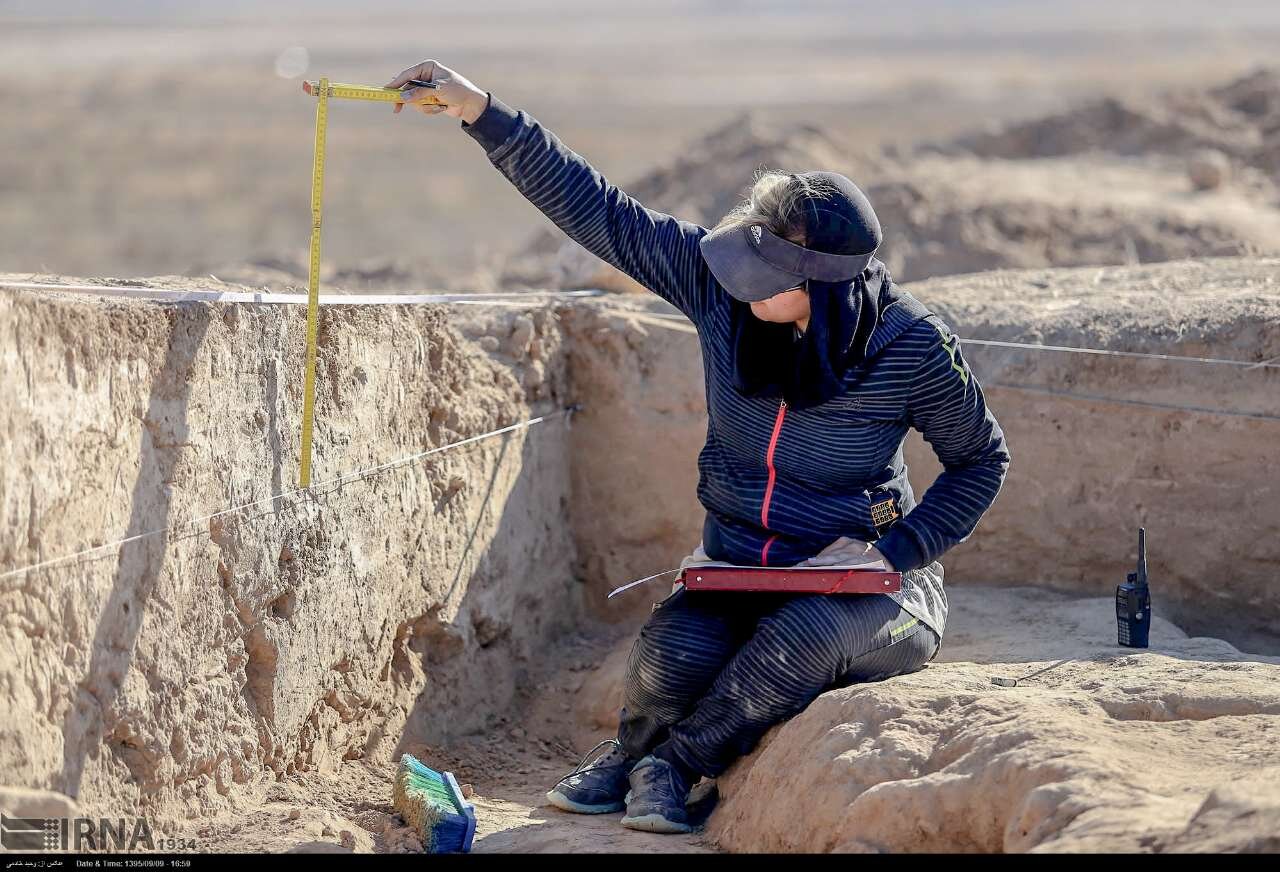Archaeologists start new dig at site previously yielded urn-like tombs in southwest Iran

TEHRAN—An archaeological team has resumed work on a site in which urn-like tombs were accidentally discovered last year in an oil drilling project off the river Karun, near the city of Ahvaz, southwest Iran.
“After receiving an excavation permit from the Research Institute of Cultural Heritage & Tourism, we commenced work on the site of Now-Yafteh, which was found by chance during an oil drilling project near Ahvaz last year,” IRNA quoted archaeologist Gholamreza Salmanpur as saying Sunday.
He said that initial digs resulted in the discovery of human remains buried within giant earthen urns at the site.
“The preliminary investigations of these burial vessels are ongoing. And all findings will undergo laboratory and osteological studies.”
Also, an archeogeophysical survey has been carried out using the magnetometric method in this area by subject specialists to find evidence of other possible graves and architectural remains, the archaeologists said.
“When this excavation season comes to an end, the tombs and the findings related to them will be transported for effective protection and museum display with the help of a restoration group.”
Salmanpur said: “Undoubtedly, the protection and maintenance of the artifacts found in this are of high significance in terms of studying the course of historical development in the period of late antiquity in the southwest of Iran.”
Situated about 150 meters from the river, the site, believed to be a cemetery, yielded ancient human remains some beige-colored urn tombs that are coated with natural tar.
As mentioned by archaeologist Hossein Feizi, the urn tombs face the river, suggesting a hypothesis that those burials were made according to Mithraism principles. “The fact that this type of burial is toward the river strengthens the hypothesis that this cemetery and its burials had links with Mithraism,” Feizi said.
Mithraism was a sect of Zoroastrianism, characterized by the worship of Mithra as the defender of the truth, and it was a monotheistic mystery religion prevalent in the Roman Empire before the acceptance of Christianity in the fourth century.
Preliminary researches show the cemetery dates back to the time of the Parthian Empire (247 BC—224 CE), which once stretched from the northern reaches of the Euphrates, in what is now central-eastern Turkey, to eastern Iran.
As mentioned by Feizi, the newly discovered urn tombs can be compared and contrasted with the ones previously discovered in Shoghab (cemetery) of Bushehr province. “This type of burial in urns was especially dedicated to babies and young children, since the Neolithic era. But the peak of the use of this burial method can be observed and followed during the Parthian period.”
Covering five hectares of land, Shoghab cemetery, which is located on the outskirts of Bushehr, is adjacent to other magnificent sites that date from the Elamite (3200—539 BC) and Sassanid (224 CE-651) eras. Previous excavations there have revealed three types of burial, including rectangular tombstones, rectangular pit tombs made of stone, and (giant) urn pits (stretched) in the east-west direction.
Elsewhere in his remarks, Feizi reminded that many researchers believe the southern parts of Khuzestan - and in particular Ahvaz and its surroundings - were once permanent settlements from the Sassanid era onwards.
“The discovery of this new cemetery in Ahvaz well indicates human settlements in the late Parthian period,” the archaeologist said.
Concerning the fact that the new discoveries are made during an oil drilling project, Cultural Heritage activist Mojtaba Gahestuni has expressed worry that the site may not be protected.
“Now, a new ancient site has been discovered in the area of an oil company's workshop, and there is a concern that this site will not be explored. This area needs to be explored, saved, preserved, and registered nationally,” Gahestuni explained.
The Parthian Empire, also known as the Arsacid Empire, was a major Iranian political and cultural power in ancient Iran. The Parthians largely adopted the art, architecture, religious beliefs, and royal insignia of their culturally heterogeneous empire, which encompassed Persian, Hellenistic, and regional cultures. At its height, the Parthian Empire stretched from the northern reaches of the Euphrates, in what is now central-eastern Turkey, to eastern Iran.
Parthian wealth obtained through lucrative trade networks resulted in substantial patronage of the arts, in particular, relief sculpture, statuary (large and small scale), architectural sculpture, metalwork, jewelry, and ceramics; coins with images of Parthian rulers form another important category of objects.
AFM
Leave a Comment